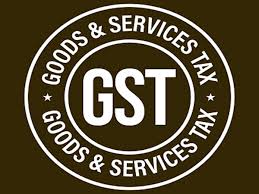
INTRODUCING GST:
In 2000, the late Atal Bihari Vajpayee, who was then the Prime Minister of India, set in motion a committee aimed at formulating a new indirect tax law known as the Goods and Services Tax (GST). The main goal of GST was to streamline India’s tax system by replacing a multitude of indirect taxes such as excise duty, value-added tax (VAT), service tax, purchase tax, octroi, entry tax, and luxury tax. In this informative piece, propertywala provides you a comprehensive overview of GST's implications in the real estate sector.
WHAT IS GST?
The Goods and Services Tax Act was presented in Parliament on March 29, 2017, and officially came into action on July 1, 2017. This tax regime is uniquely applicable across India and is imposed on the supply of selected goods and services. Importantly, customs duty remains a separate charge on imported goods and services. Under GST, various categories of products and services attract differing tax rates.
As we delve into this GST framework orchestrated by our distinguished Prime Minister Shri Narendra Modi, let's reflect on his assertion that the Goods and Services Tax (GST) is "a pioneering legislative measure for New India.” Moreover, GST signifies not merely a fiscal reform but embodies a significant stride towards realizing Sardar Vallabhbhai Patel's vision of ‘Ek Bharat – Shrestha Bharat.’
HOW GST AFFECTS REAL ESTATE:
WHERE GST IS APPLICABLE:
- GST applies exclusively to under-constructed flats.
- The reason is that the real estate sector falls outside the scope of GST. Hence, the applicable tax on a property is categorized under ‘work contracts.’
WHERE GST DOES NOT APPLY:
- GST is not levied on ready-to-move-in flats or plots of land.
- Upon completion of the property and receipt of the occupancy certificate (OC), the property is classified as ready for occupancy, which means developers cannot impose GST on the sale of such properties.
GST RATES FOR REAL ESTATE IN 2022:
For many aspiring homeowners, the desire to own a property is a significant goal in life. Nevertheless, prospective home buyers in India need to be cognizant of the GST they must pay when acquiring under-construction properties like flats, apartments, and bungalows. It’s essential to reflect on the often-asked question, “What is the GST rate on real estate?”
PROPERTY TYPE AND GST RATES FROM APRIL 2019
- Affordable Housing: 1% without ITC (Input Tax Credit)
- Non-Affordable Housing: 5% without ITC
According to the above table, if the property is classified as affordable, the GST rate stands at just 1% without the benefit of ITC. Meanwhile, for non-affordable housing, the GST rate remains at 5% without ITC.
UNDERSTANDING ITC:
Input Tax Credit allows individuals to claim the tax already paid on any purchased goods and/or services utilized for business purposes. This credit acts as a deduction from the overall tax payable.
UNDERSTANDING AFFORDABLE HOUSING UNDER GST:
As per government regulations, housing units priced up to Rs 45 lakhs are defined as affordable housing in metro areas, with a carpet area limited to 60 square meters. Major metropolitan regions like Delhi-National Capital Region, Bengaluru, Chennai, Hyderabad, and Mumbai-Kolkata fall under this umbrella. Conversely, in non-metro regions, a housing unit remains classified as affordable if it costs no more than Rs 45 lakhs and has a maximum carpet area of 90 square meters, as highlighted in the table below.
CITIES PRICE CARPET AREA (SQ/M)
- METROS: Up to Rs. 45 lakhs - 60 sq/m
- NON-METROS: Below Rs. 45 lakhs - 90 sq/m
IMPORTANT FACTS TO REMEMBER ABOUT GST IN REAL ESTATE:
- GST does not include stamp duty and registration charges; these must still be paid separately.
- Sellers often raise the costs of ready-to-move-in properties to account for the GST burden. Consequently, under-construction properties are relatively less expensive than their finished counterparts.
That sums up the essentials you need to grasp about GST in the realm of real estate.